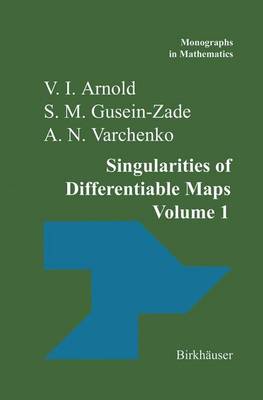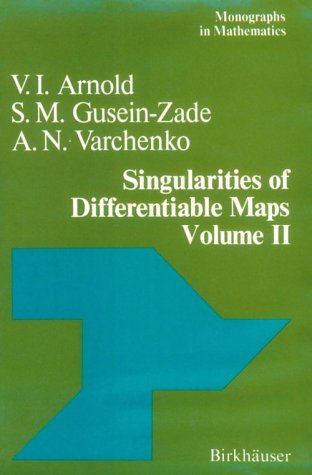Monographs in Mathematics
2 primary works
Book 82
Singularities of Differentiable Maps
by V. I. Arnold, Alexander N. Varchenko, and S. M. Gusein-Zade
Published 1 January 1985
... there is nothing so enthralling, so grandiose, nothing that stuns or captivates the human soul quite so much as a first course in a science. After the first five or six lectures one already holds the brightest hopes, already sees oneself as a seeker after truth. I too have wholeheartedly pursued science passionately, as one would a beloved woman. I was a slave, and sought no other sun in my life. Day and night I crammed myself, bending my back, ruining myself over my books; I wept when I beheld others exploiting science fot personal gain. But I was not long enthralled. The truth is every science has a beginning, but never an end - they go on for ever like periodic fractions. Zoology, for example, has discovered thirty-five thousand forms of life ... A. P. Chekhov. "On the road" In this book a start is made to the "zoology" of the singularities of differentiable maps. This theory is a young branch of analysis which currently occupies a central place in mathematics; it is the crossroads of paths leading from very abstract corners of mathematics (such as algebraic and differential geometry and topology, Lie groups and algebras, complex manifolds, commutative algebra and the like) to the most applied areas (such as differential equations and dynamical systems, optimal control, the theory of bifurcations and catastrophes, short-wave and saddle-point asymptotics and geometrical and wave optics).
Book 83
The present. volume is the second volume of the book "Singularities of Differentiable Maps" by V.1. Arnold, A. N. Varchenko and S. M. Gusein-Zade. The first volume, subtitled "Classification of critical points, caustics and wave fronts", was published by Moscow, "Nauka", in 1982. It will be referred to in this text simply as "Volume 1". Whilst the first volume contained the zoology of differentiable maps, that is it was devoted to a description of what, where and how singularities could be encountered, this volume contains the elements of the anatomy and physiology of singularities of differentiable functions. This means that the questions considered in it are about the structure of singularities and how they function. Another distinctive feature of the present volume is that we take a hard look at questions for which it is important to work in the complex domain, where the first volume was devoted to themes for which, on the whole, it was not important which field (real or complex) we were considering.
Such topics as, for example, decomposition of singularities, the connection between singularities and Lie algebras and the asymptotic behaviour of different integrals depending on parameters become clearer in the complex domain. The book consists of three parts. In the first part we consider the topological structure of isolated critical points of holomorphic functions. We describe the fundamental topological characteristics of such critical points: vanishing cycles, distinguished bases, intersection matrices, monodromy groups, the variation operator and their interconnections and method of calculation.
Such topics as, for example, decomposition of singularities, the connection between singularities and Lie algebras and the asymptotic behaviour of different integrals depending on parameters become clearer in the complex domain. The book consists of three parts. In the first part we consider the topological structure of isolated critical points of holomorphic functions. We describe the fundamental topological characteristics of such critical points: vanishing cycles, distinguished bases, intersection matrices, monodromy groups, the variation operator and their interconnections and method of calculation.

